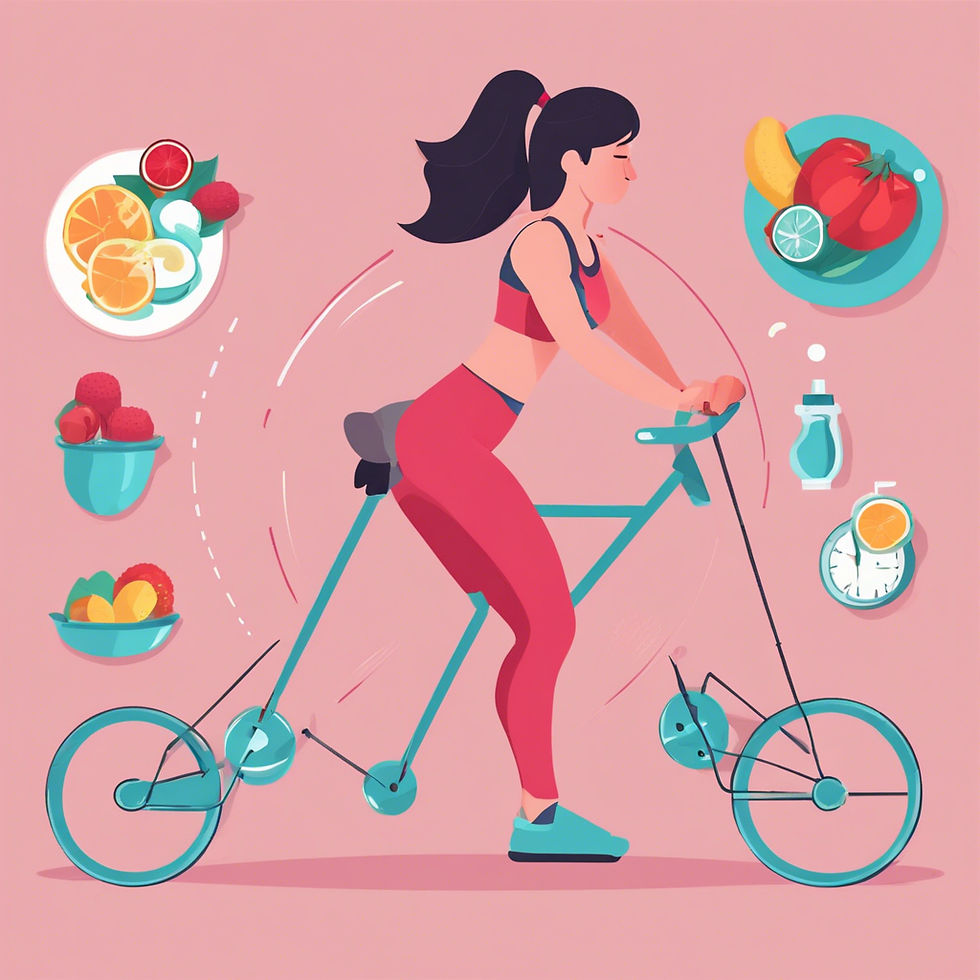Cycle Syncing: Mindful nutrition and exercise during menstruation.
- imabcounseling
- Aug 2, 2024
- 3 min read
Updated: Dec 19, 2024

Cycle syncing is a concept that involves adapting your eating and exercise habits to the phases of your menstrual cycle. Some experts of cycle syncing suggest following standard sets of nutrition and fitness guidelines during each phase of the menstrual cycle. However, menstruation affects everyone differently, so there isn’t a one-size-fits-all approach. Still, cycle tracking can be a useful tool for exploring how your mind and body feel throughout your cycle. After a few cycles, you’ll likely notice some common trends that can help you develop habits that support your unique needs in different menstrual stages.
Who can benefit from cycle syncing? Anyone who menstruates! Including those with conditions including: PCOS, endometriosis, PMS, PMDD, and PME.
First, lets understand the menstrual cycle (Keep in mind days vary from person to person):
Phase | Days (approx.) | Hormonal changes |
Menstruation | 1–5 | Estrogen and progesterone are low. |
Follicular | 6–14 | Estrogen climbs, reaching its peak level in the later follicular stage. |
Ovulatory | 15–17 | Luteinizing hormone and follicle-stimulating hormone reach their highest levels. This is known as the LH surge. |
Luteal | 18–28 | Progesterone peaks and estrogen rises again, but not as much as it does in the follicular phase. |
Chart is referenced from Healthline.com
Energy is typically lower during the Luteal phase, or the week before your period, as found in a 2021 study of female athletes. Cycle syncing can be beneficial to understanding your body and the fluctuations in mood and energy during each phase of the menstrual cycle.
Menstrual Phase:
It is not uncommon to feel lethargic during this phase as the body is naturally shedding the uterine lining. You may tend to feel tired, moody, and bloated here. Low impact exercise or intentional stretching is beneficial here to reduce fatigue and can ease period pain symptoms.
Increase your intake of iron rich foods like leafy greens and vegetables, red meats, and beans. Increase your vitamin C here with fruits and berries!
Follicular Phase:
Energy tends to rise here as or estrogen and pregesterone begins to increase. High intensity workouts and high-cardio regimens are welcomed here. Try HIIT, spin, or a hike!
Support your energy here with carbohydrates like fruit and whole grains, and balance estrogen with avocados, broccoli, cauliflower, and fermented foods.
Ovulation Phase:
Our LH hormone spikes during this time allowing us to feel more alert and reach our highest levels of energy here. It may be beneficial to try weight training programs like Pilates, shadowboxing, or boot camps during this week as the intensity feels more manageable here.
Stay hydrated in this phase to compensate for the loss of water through your intense workouts. Continue to eat foods that support you energy and healthy fats likes fish and avocados.
Luteal Phase:
You may find that you are more sluggish here that the weeks prior, this is also known as the time where we feel more breast pain and abdominal discomfort. For those with PMDD or PMS, you may feel more down during this phase. Try exercises that feel right for you like Yin Yoga, gentle stretching, or restorative yoga. Some individuals may feel spike in energy during this phase, just listen to your body and do what feels right for you!
It is important to take time for rest in this phase and drink plenty of water. You may find you are craving sweets or salty foods, satisfy those cravings with plenty of protein and high-fiber foods. Healthier snacks here like dark chocolate and fruit, nuts, and other healthy fats.
Try Yoga with Adrienne: 20-minute yoga for cramps and PMS
Shelby Secor, LMHC
08/02/2024







